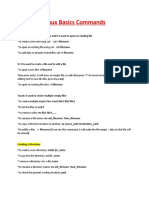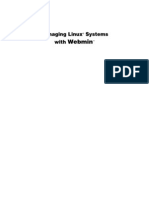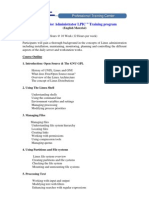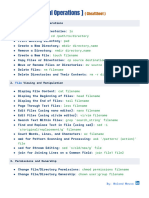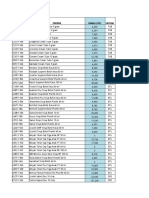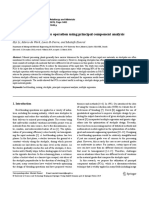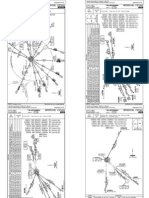0% found this document useful (0 votes)
24 views3 pagesLinux (Advanced)
The document outlines advanced Linux administration topics including file commands, user security, process control, and system configuration. It covers essential tools and commands for managing files, users, permissions, and system processes, as well as installation and boot management. Additionally, it discusses scheduling tasks, logging, and archiving, providing a comprehensive guide for Linux administrators.
Uploaded by
ebrahimhatem2005Copyright
© © All Rights Reserved
We take content rights seriously. If you suspect this is your content, claim it here.
Available Formats
Download as TXT, PDF, TXT or read online on Scribd
0% found this document useful (0 votes)
24 views3 pagesLinux (Advanced)
The document outlines advanced Linux administration topics including file commands, user security, process control, and system configuration. It covers essential tools and commands for managing files, users, permissions, and system processes, as well as installation and boot management. Additionally, it discusses scheduling tasks, logging, and archiving, providing a comprehensive guide for Linux administrators.
Uploaded by
ebrahimhatem2005Copyright
© © All Rights Reserved
We take content rights seriously. If you suspect this is your content, claim it here.
Available Formats
Download as TXT, PDF, TXT or read online on Scribd
/ 3
































